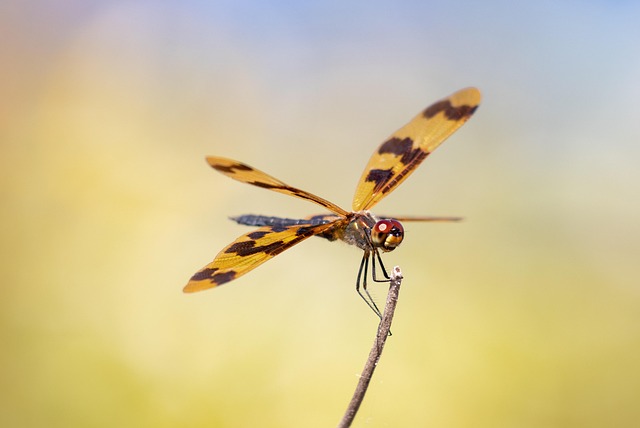Eco-friendly bed bug treatments are gaining popularity in multi-unit dwellings due to their health and environmental benefits. These methods, avoiding harsh chemicals, employ heat therapy, natural plant insecticides, and specialized equipment for effective control. By prioritizing tenant safety and ecological preservation, these sustainable practices offer a safer alternative to traditional pesticides. Long-term management involves regular inspections, preventative measures like sealing entry points, and integrated pest management strategies to maintain bug-free environments.
Bed bugs in multi-unit properties are a growing concern, impacting residents’ well-being and property values. Understanding these infestations is key to effective management. This article delves into specialized treatments for bed bugs, highlighting the benefits of eco-friendly options. We explore strategies that balance efficacy with environmental responsibility, focusing on long-term prevention techniques. By adopting these methods, property managers can create safer, more sustainable living spaces while mitigating pest control’s ecological impact. Eco-friendly bed bug treatments offer a promising path forward.
Understanding Bed Bug Infestations in Multi-Unit Properties
Bed bug infestations in multi-unit properties, such as apartments or condos, present unique challenges due to the interconnected nature of these living spaces. Understanding how bed bugs spread and thrive in such environments is crucial for effective management. These pests are highly adaptable and can quickly multiply, making them difficult to eradicate. They travel between units through tiny cracks, crevices, and shared infrastructure like piping and electrical wiring. The close proximity of residents and frequent social areas further facilitate their spread.
Eco-friendly bed bug treatments have gained prominence as a preferred approach for controlling these infestations. Unlike traditional methods that rely heavily on toxic chemicals, eco-friendly solutions focus on non-toxic, safe, and sustainable alternatives. These methods often involve heat treatment, which uses temperature extremes to kill bed bugs and their eggs; or targeted applications of natural insecticides derived from plants. Such treatments not only ensure the well-being of residents but also contribute to a healthier and more environmentally conscious approach to pest management in multi-unit properties.
The Benefits of Eco-Friendly Bed Bug Treatments
Eco-friendly bed bug treatments are gaining popularity in multi-unit properties due to their numerous benefits. One of the key advantages is minimal environmental impact, making them a safer option for tenants and property managers alike. These methods often avoid the use of harsh chemicals, reducing potential health risks and negative effects on the ecosystem.
Moreover, eco-friendly treatments can be highly effective in controlling bed bug infestations. They may include natural repellents, heat or cold therapy, and strategic targeting using specialized equipment. By employing these innovative approaches, it’s possible to achieve long-lasting results while maintaining a healthy and sustainable living environment for residents.
Strategies for Effective Eco-Conscious Pest Control
In the pursuit of effective bed bug control, especially in multi-unit properties, adopting eco-conscious strategies is a responsible and increasingly popular approach. Traditional pest control methods often rely on harsh chemicals that can pose risks to residents’ health and the environment. Eco-friendly bed bug treatments, however, offer a safer alternative by utilizing natural ingredients and innovative techniques. These methods not only eliminate infestations but also minimize exposure to toxic substances.
One key strategy is heat treatment, which uses controlled temperatures to kill bed bugs and their eggs. This method is highly effective and leaves no chemical residue. Additionally, using essential oils like peppermint, citronella, or neem oil can act as natural repellents and insecticides, providing a safe and pleasant solution for both residents and the environment. These eco-friendly treatments are not only powerful but also promote a healthier living space while preserving the well-being of tenants and the ecosystem.
Long-Term Management and Prevention Techniques
In addition to one-time bed bug eliminations, long-term management and prevention techniques are crucial for maintaining a pest-free environment in multi-unit properties. Eco-friendly bed bug treatments offer a sustainable approach that not only targets existing infestations but also helps prevent future outbreaks. These methods often include regular inspections, early detection systems, and ongoing monitoring to identify and address any signs of bed bugs promptly.
Effective prevention involves sealing entry points, maintaining cleanliness, and educating residents about the importance of vigilance. Regular vacuuming and dusting can help remove egg casings and nymphs from crevices and floors. Additionally, using zipped covers for mattresses and box springs creates a physical barrier against bed bugs, providing an extra layer of protection. These integrated pest management strategies work synergistically to disrupt the bed bug lifecycle and maintain a comfortable, bug-free living space for all residents.
In addressing bed bug infestations in multi-unit properties, a shift towards eco-friendly treatments offers a safer and more sustainable solution. By understanding the unique challenges of these settings and employing strategies that minimize environmental impact, property managers can effectively protect tenants without compromising well-being. Eco-conscious pest control not only reduces exposure to harmful chemicals but also fosters long-term management and prevention techniques, ensuring a healthier living environment for all residents.
